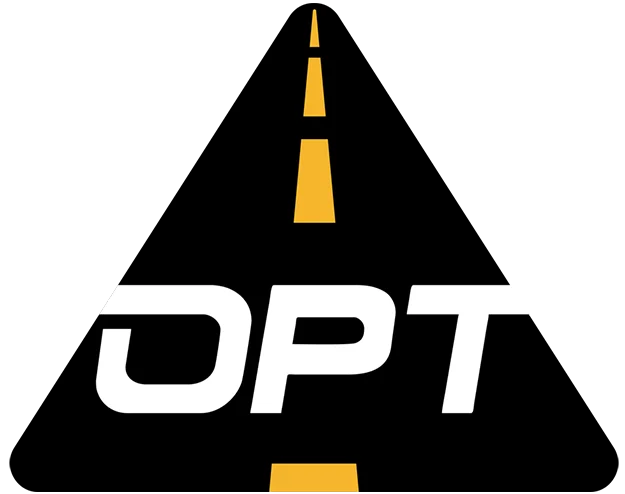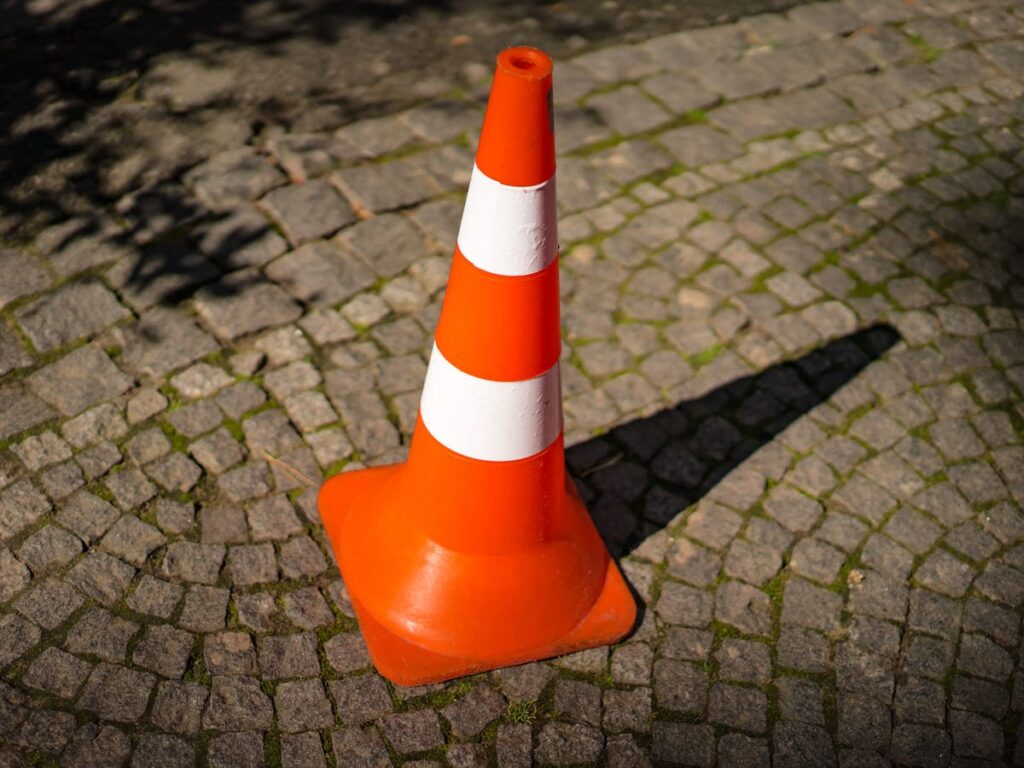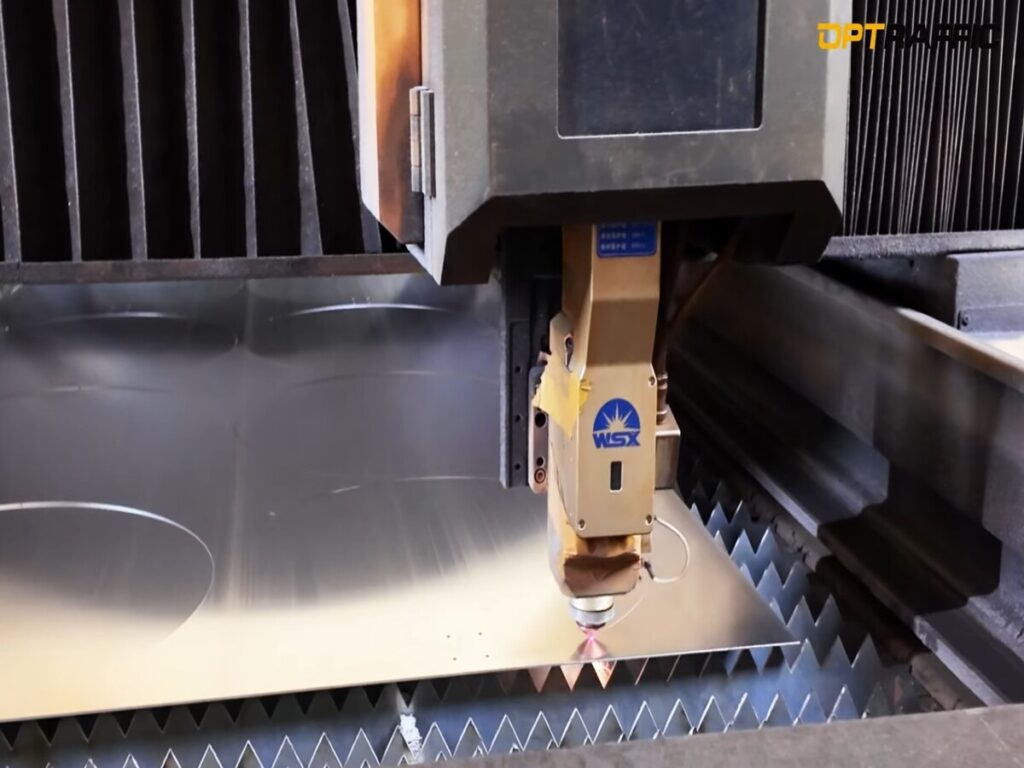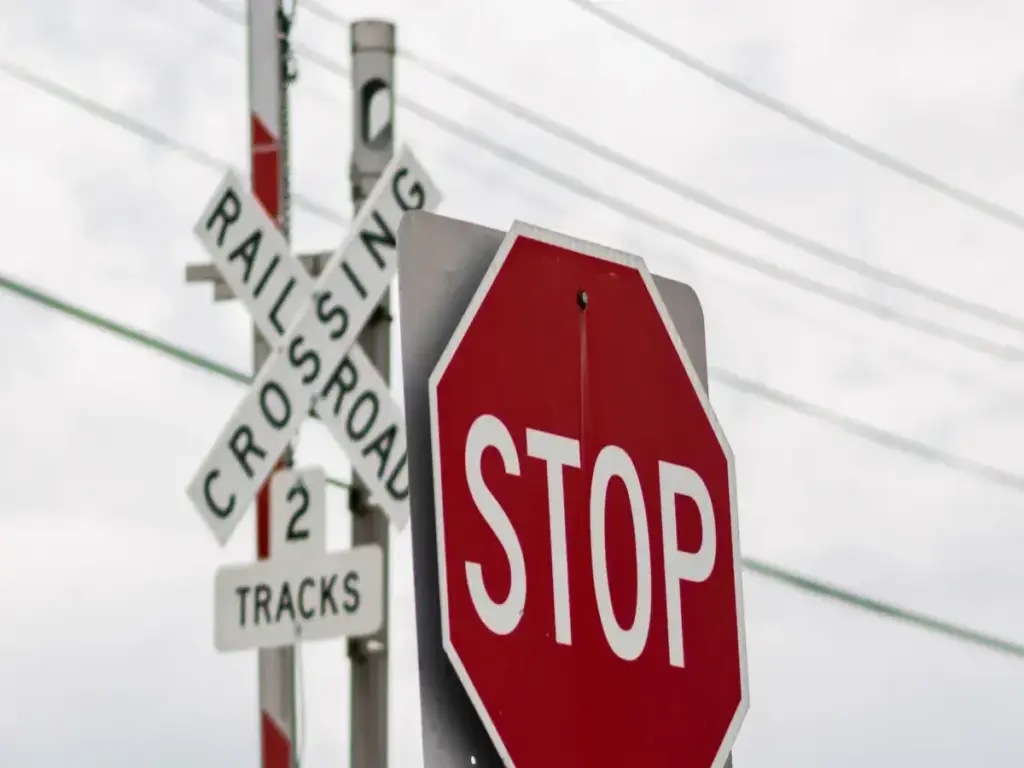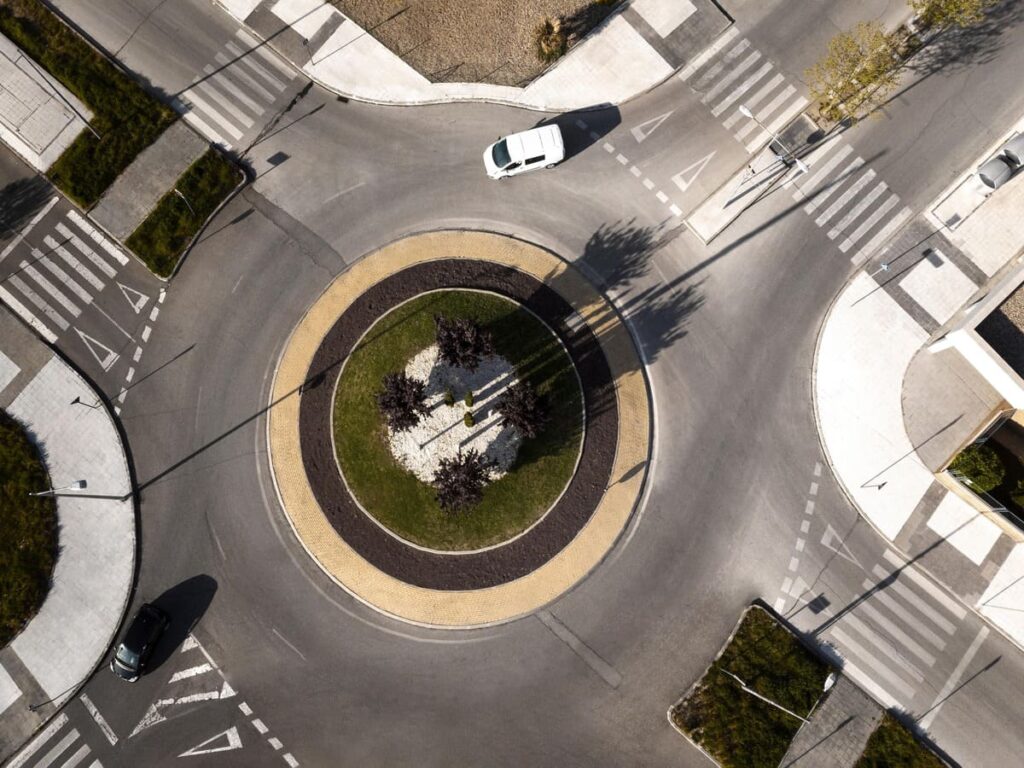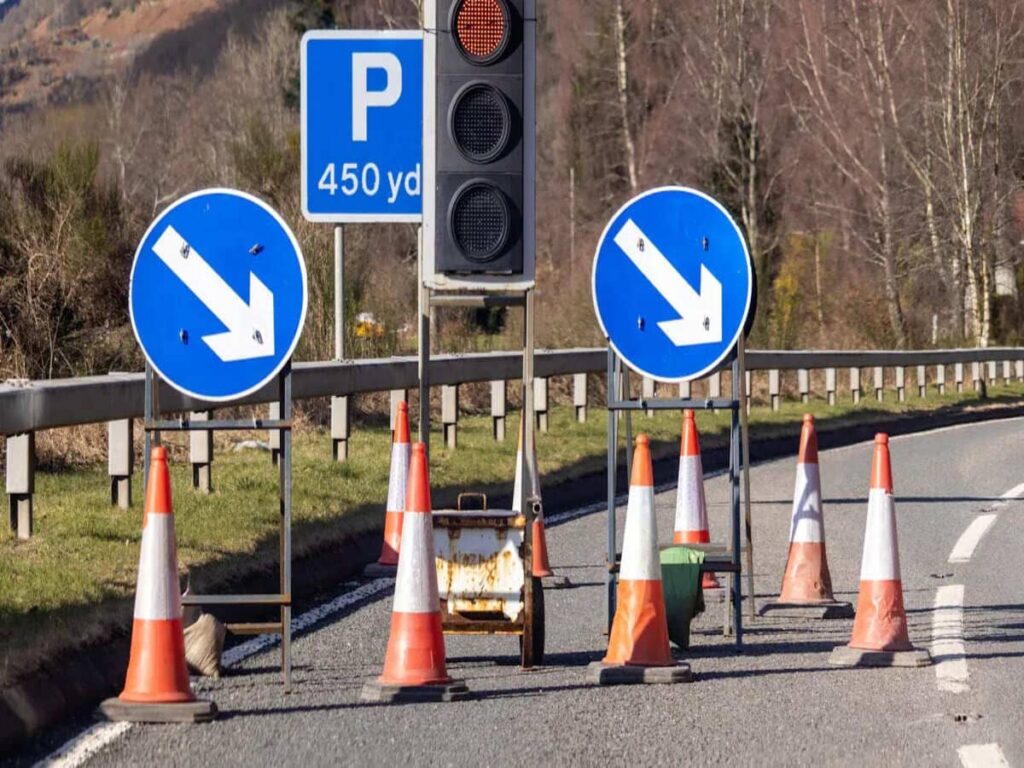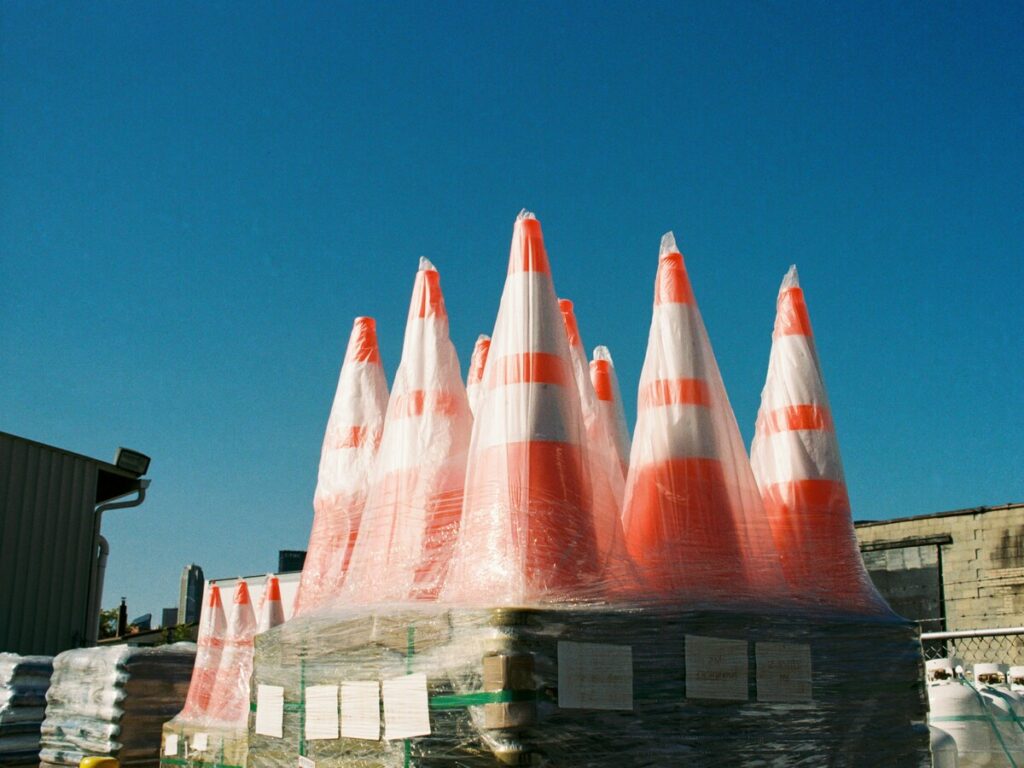
सुरक्षा और अपशिष्ट प्रबंधन कुशल और खतरा-मुक्त निर्माण स्थलों को बनाए रखने में महत्वपूर्ण भूमिका निभाते हैं. प्रत्येक वर्ष, निर्माण-संबंधी दुर्घटनाओं के परिणामस्वरूप महत्वपूर्ण चोटें और मौतें होती हैं. नीचे दी गई तालिका कुछ चौंकाने वाले आंकड़ों पर प्रकाश डालती है:
| सांख्यिकीय विवरण | कीमत | वर्ष |
|---|---|---|
| निर्माण कार्य में होने वाली मौतों की वार्षिक संख्या | 1,008 | 2021 |
| अमेरिकी श्रमिकों की सभी मौतों का कारण निर्माण कार्य है | 21% | 2021 |
| निर्माण में मृत्यु दर | 9.4 प्रति 100,000 कार्यकर्ता | 2021 |
| निर्माण में कुल दर्ज चोटें | 169,200 | 2021 |
| चोट के कारण औसत दिन काम से दूर | 11 | 2020 |
| निर्माण-संबंधी मौतों की वार्षिक लागत | $5 अरब | एन/ए |
| श्रमिकों के मुआवजे की लागत प्रत्यक्ष लागत | $7.87 अरब | एन/ए |
आप अपनी सुरक्षा रणनीति में ट्रैफ़िक शंकु जैसे सरल उपकरणों को शामिल करके इन जोखिमों को कम कर सकते हैं. Colored safety cones create visible barriers, गाइड वाहन, और श्रमिकों को खतरनाक क्षेत्रों के लिए सचेत करें. वे चैनल ट्रैफ़िक में भी मदद करते हैं, भीड़ को कम करें, और दुर्घटनाओं को रोकें. इन शंकु का प्रभावी ढंग से उपयोग करके, आप सुरक्षा बढ़ा सकते हैं और अपनी साइट पर अपशिष्ट प्रबंधन प्रथाओं में सुधार कर सकते हैं.
OPTRAFFIC यातायात शंकु आपको सुरक्षितता सुनिश्चित करने के लिए आवश्यक स्थायित्व और दृश्यता प्रदान करें, अधिक व्यवस्थित निर्माण स्थल. विश्वास ऑप्टट्रैफ़िक कचरे का कुशलतापूर्वक प्रबंधन करते हुए उच्चतम सुरक्षा मानकों को बनाए रखने में आपकी मदद करना.
निर्माण और विध्वंस का परिचय (सी&डी) बरबाद करना
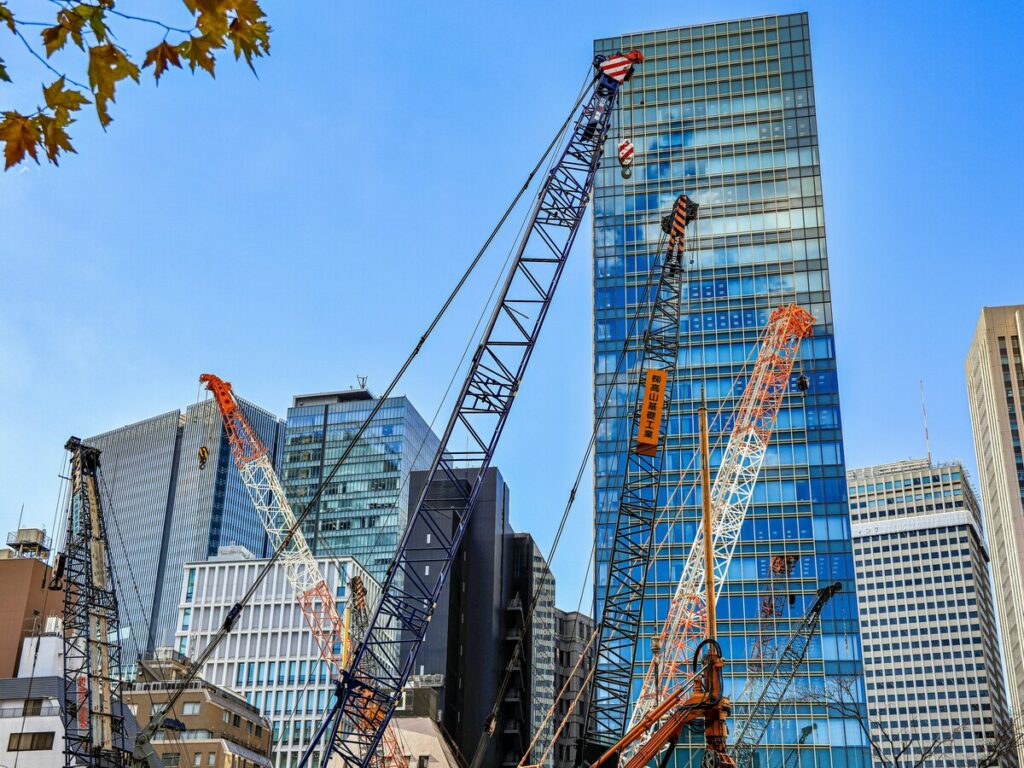
सी क्या है?&डी अपशिष्ट और यह क्यों मायने रखता है
निर्माण एवं विध्वंस (सी&डी) waste refers to the debris generated during the construction, नवीकरण, और इमारतों का विध्वंस, सड़कें, और अन्य संरचनाएँ. इस कचरे में कंक्रीट जैसी सामग्रियां शामिल हैं, लकड़ी, धातु, डामर, और ड्राईवॉल. इसमें सीसा जैसे खतरनाक पदार्थ भी होते हैं, पारा, और एस्बेस्टस, जिसे सावधानीपूर्वक संभालने की आवश्यकता है. वैश्विक स्तर पर, सी की वार्षिक मात्रा&डी कचरा पहुंचने का अनुमान है 2.2 अरब टन द्वारा 2025. यह चौंका देने वाला आंकड़ा इस कचरे को प्रभावी ढंग से प्रबंधित करने के महत्व पर प्रकाश डालता है.
Proper management of C&D waste is critical for environmental sustainability. यह पर्यावरणीय प्रभाव को कम करता है, लागत कम करता है, और बहुमूल्य संसाधनों का संरक्षण करता है. प्रमुख रणनीतियों में अपशिष्ट पृथक्करण शामिल है, पुनर्चक्रण, और पुन: उपयोग करें. उन्नत प्रौद्योगिकियां अब सामग्रियों को अलग करना और अपशिष्ट उत्पादन को कम करना आसान बनाती हैं. इन प्रथाओं को अपनाकर, आप लैंडफिल अपशिष्ट को कम कर सकते हैं, संसाधनों का संरक्षण, और एक चक्रीय अर्थव्यवस्था को बढ़ावा देना. जहां संभव हो कचरे को खत्म करना और सामग्रियों का पुन: उपयोग करना स्थिरता प्रयासों को और बढ़ा सकता है.
तथापि, सी का प्रबंधन&डी बर्बादी चुनौतियों के साथ आती है. दूषण, उच्च परिवहन लागत, और बुनियादी ढांचे की कमी अक्सर प्रभावी अपशिष्ट प्रबंधन में बाधा बनती है. पुनर्नवीनीकरण सामग्री की बाजार मांग और नियामक बाधाएं भी प्रक्रिया को जटिल बनाती हैं. इन मुद्दों के समाधान के लिए नवीन समाधानों और कानूनी ढांचे के अनुपालन के संयोजन की आवश्यकता है.
अपशिष्ट प्रबंधन के लिए कानूनी ढांचा
संयुक्त राज्य अमेरिका में, the Resource Conservation and Recovery Act (आरसीआरए) ठोस और खतरनाक कचरे के निपटान को नियंत्रित करता है. यह संघीय कानून, में अधिनियमित किया गया 1976, सी को नियंत्रित करता है&डी दो श्रेणियों के अंतर्गत मलबा: गैर-खतरनाक कचरे के लिए उपशीर्षक डी और खतरनाक कचरे के लिए उपशीर्षक सी. उपशीर्षक डी कंक्रीट और लकड़ी जैसी सामग्रियों के प्रबंधन पर केंद्रित है, जबकि उपशीर्षक सी खतरनाक पदार्थों के लिए सख्त आवश्यकताओं को लागू करता है, सुनिश्चित करना ए “कब्र को झूला” system of accountability.
| विनियमन | विवरण |
|---|---|
| आरसीआरए | प्रिंसिपल यू.एस. ठोस और खतरनाक अपशिष्ट निपटान के लिए कानून, में अधिनियमित किया गया 1976. |
| उपशीर्षक डी | गैर-खतरनाक ठोस अपशिष्टों को कवर करता है, सी सहित&डी मलबा. |
| उपशीर्षक सी | कड़े प्रबंधन और रिपोर्टिंग नियमों के साथ खतरनाक कचरे को नियंत्रित करता है. |
अंतरराष्ट्रीय स्तर पर, कानूनी ढाँचे अलग-अलग होते हैं. यूरोपीय संघ में, वेस्ट फ्रेमवर्क डायरेक्टिव सी को प्राथमिकता देता है&डी अपशिष्ट पुनर्चक्रण, न्यूनतम का लक्ष्य 70% वजन द्वारा पुनर्चक्रण. यूरोपीय संघ के देशों में पुनर्चक्रण दरें कम से कम होती हैं 10% पर 90%, अपशिष्ट प्रबंधन के विविध दृष्टिकोणों को प्रतिबिंबित करना. इन विनियमों को समझकर और उनका अनुपालन करके, आप सुरक्षित और अधिक टिकाऊ निर्माण प्रथाओं को सुनिश्चित कर सकते हैं.
निर्माण स्थल अपशिष्ट प्रबंधन में यातायात शंकु की भूमिका
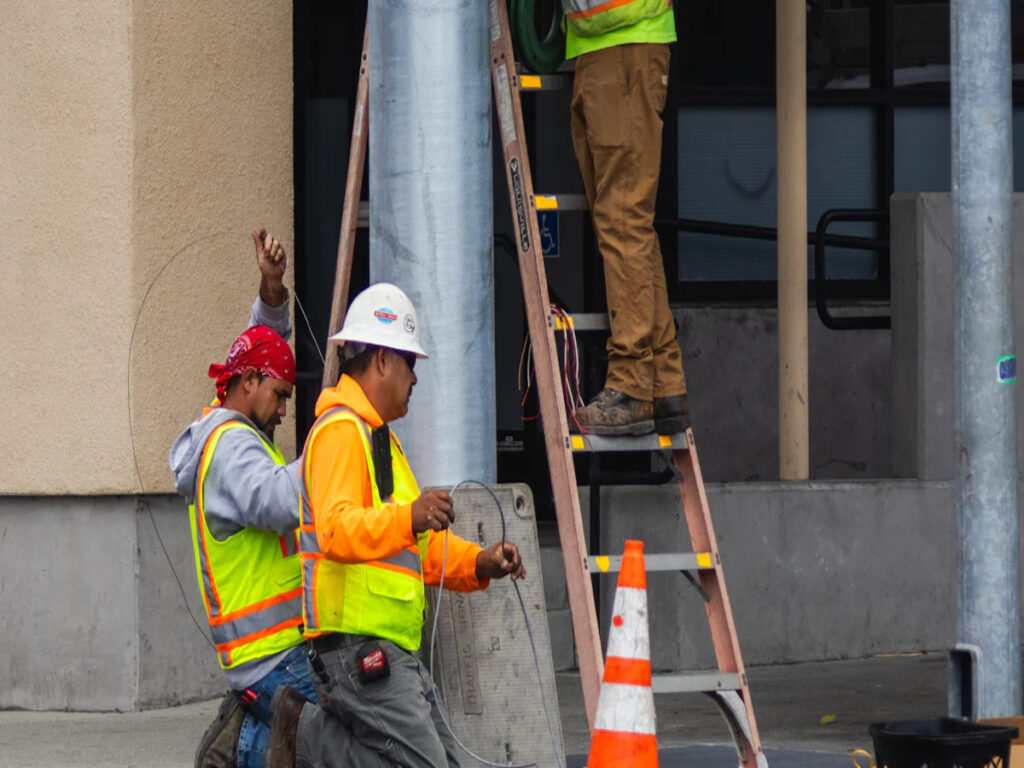
खतरनाक अपशिष्ट क्षेत्रों को चिह्नित करना
Colored safety cones play a crucial role in marking hazardous waste zones on construction sites. ये सुरक्षा शंकु खतरनाक क्षेत्रों के चारों ओर स्पष्ट सीमाएँ बनाते हैं, वाहनों और पैदल यात्रियों को उन क्षेत्रों में प्रवेश करने से रोकना जिनमें सीसा जैसी खतरनाक सामग्री हो सकती है, पारा, या एस्बेस्टस. उनका चमकीला नारंगी रंग उच्च दृश्यता सुनिश्चित करता है, यहां तक कि कम रोशनी की स्थिति में भी, उन्हें सुरक्षा बनाए रखने के लिए एक प्रभावी उपकरण बनाना.
You can use these सुरक्षा शंकु to signal ongoing roadwork or construction activities. यह ड्राइवरों को गति धीमी करने या वैकल्पिक मार्ग अपनाने के लिए प्रेरित करता है, दुर्घटनाओं के जोखिम को कम करना. इसके अतिरिक्त, शंकु साइट के चारों ओर यातायात प्रवाह को प्रबंधित करने में मदद करते हैं, श्रमिकों और आगंतुकों को सुरक्षित रखते हुए सुचारू संचालन सुनिश्चित करना. जब चेतावनी संकेतों के साथ जोड़ा जाता है, रंगीन सुरक्षा शंकु खतरे की प्रकृति के बारे में स्पष्ट मार्गदर्शन प्रदान करते हैं, जैसे खुली खाइयाँ या गीला फर्श, संभावित खतरों से बचने में सभी की मदद करना.
इन शंकुओं की सुवाह्यता उन्हें गतिशील निर्माण वातावरण के लिए आदर्श बनाती है. जैसे-जैसे काम आगे बढ़ता है आप आसानी से उनका स्थान बदल सकते हैं, यह सुनिश्चित करना कि खतरनाक क्षेत्र हर समय अच्छी तरह से चिह्नित रहें. यह लचीलापन एक सुरक्षित और व्यवस्थित कार्यस्थल को बनाए रखने में उनकी प्रभावशीलता को बढ़ाता है.
अपशिष्ट हटाने और निपटान के दौरान सुरक्षा बढ़ाना
यातायात सुरक्षा शंकु significantly enhance safety during waste removal and disposal processes. खतरनाक क्षेत्रों का सीमांकन करके, ये शंकु उन क्षेत्रों में अनधिकृत पहुंच को रोकते हैं जहां कचरे का प्रबंधन किया जा रहा है. इससे हानिकारक पदार्थों के संपर्क में आने का जोखिम कम हो जाता है और वाहनों या पैदल चलने वालों से होने वाली दुर्घटनाएँ कम हो जाती हैं.
कचरा हटाने के दौरान, कोन ड्राइवरों को निर्माण क्षेत्र और लेन बंद होने के प्रति सचेत करते हैं. इससे टकराव की संभावना को कम करने में मदद मिलती है और यह सुनिश्चित होता है कि वाहन साइट पर सुरक्षित रूप से नेविगेट करते हैं. आपात्कालीन स्थिति में, रंगीन सुरक्षा शंकु यातायात को पुनर्निर्देशित कर सकते हैं और रास्ता बदल सकते हैं, वाहनों को खतरनाक क्षेत्रों से दूर रखना. यह सुनिश्चित करता है कि कचरा हटाने का कार्य सुरक्षा से समझौता किए बिना सुचारू रूप से आगे बढ़े.
Colored safety cones also guide workers and equipment operators, उन्हें खतरनाक सामग्रियों से सुरक्षित दूरी बनाए रखने में मदद करना. की उचित नियुक्ति रंगीन सुरक्षा शंकु around waste storage and disposal areas ensures that everyone on-site knows where to avoid. यह संगठित दृष्टिकोण न केवल सुरक्षा बढ़ाता है बल्कि अपशिष्ट प्रबंधन में दक्षता में भी सुधार करता है.
निर्माण स्थलों पर आरसीआरए और खतरनाक अपशिष्ट प्रबंधन
खतरनाक अपशिष्ट की चार विशेषताओं को समझना
The Resource Conservation and Recovery Act (आरसीआरए) चार प्रमुख विशेषताओं के आधार पर खतरनाक अपशिष्ट को परिभाषित करता है. इन लक्षणों को समझने से आपको निर्माण स्थलों पर खतरनाक सामग्रियों को सुरक्षित रूप से पहचानने और प्रबंधित करने में मदद मिलती है:
- ज्वलनशीलता: ये कचरे आसानी से आग पकड़ लेते हैं. उदाहरणों में नीचे फ़्लैश बिंदु वाले तरल पदार्थ शामिल हैं 140 ° F, जैसे कि कुछ विलायक और ईंधन.
- corrosivity: These materials can corrode metal containers or have extreme pH levels. प्रबल अम्ल और क्षार, जैसे सल्फ्यूरिक एसिड या सोडियम हाइड्रॉक्साइड, इस श्रेणी में आते हैं.
- जेट: ये अपशिष्ट सामान्य परिस्थितियों में अस्थिर होते हैं. वे विस्फोट कर सकते हैं या जहरीली गैसें छोड़ सकते हैं. साइनाइड युक्त सामग्री इसका एक सामान्य उदाहरण है.
- विषाक्तता: अंतर्ग्रहण या अवशोषित होने पर ये अपशिष्ट स्वास्थ्य जोखिम पैदा करते हैं. The EPA uses the Toxicity Characteristic Leaching Procedure to determine this property.
इन विशेषताओं को पहचान कर, आप दुर्घटनाओं को रोकने के लिए सक्रिय कदम उठा सकते हैं. उदाहरण के लिए, ज्वलनशील या प्रतिक्रियाशील अपशिष्ट वाले क्षेत्रों को यातायात शंकुओं से चिह्नित करने से यह सुनिश्चित होता है कि कर्मचारी और वाहन सुरक्षित दूरी बनाए रखें. यह सरल उपाय आग के खतरे को कम करता है, विस्फोट, या हानिकारक पदार्थों के संपर्क में आना.
सी में पाया जाने वाला विशिष्ट आरसीआरए अपशिष्ट&डी मलबा
निर्माण एवं विध्वंस (सी&डी) साइटें अक्सर खतरनाक अपशिष्ट उत्पन्न करती हैं जिन्हें सावधानीपूर्वक संभालने की आवश्यकता होती है. सामान्य उदाहरणों में शामिल हैं:
- अदह: पुराने इन्सुलेशन में पाया गया, टाइल्स, और छत सामग्री.
- दूषित मिट्टी: इसमें पेट्रोलियम हाइड्रोकार्बन हो सकते हैं, हैवी मेटल्स, या कीटनाशक.
- रसायन और विलायक: चिपकने वाले शामिल हैं, सीलंट, पेंट, और पतले.
- सीसे से बना पेंट: पुरानी संरचनाओं में मौजूद है.
- विद्युत अपशिष्ट और बैटरियाँ: मॉनिटर और बैटरी जैसी वस्तुओं में अक्सर भारी धातुएँ होती हैं.
- उपचारित लकड़ियाँ: इनमें क्रेओसोट या आर्सेनिक शामिल हो सकता है.
- फ्लोरोसेंट लाइट फिक्स्चर: पुराने मॉडल में पारा हो सकता है.
इन सामग्रियों के अनुचित निपटान से गंभीर परिणाम हो सकते हैं. उदाहरण के लिए, एस्बेस्टस और सीसा महत्वपूर्ण स्वास्थ्य जोखिम पैदा करते हैं, जबकि रसायन और विलायक भूजल को दूषित कर सकते हैं. खतरनाक अपशिष्ट क्षेत्रों को चिह्नित करने के लिए ट्रैफ़िक शंकुओं का उपयोग करने से आपको इन जोखिमों को कम करने में मदद मिलती है. स्पष्ट सीमाएँ सुनिश्चित करती हैं कि कर्मचारी और उपकरण संचालक खतरनाक सामग्रियों से दूर रहें, एक सुरक्षित और अधिक व्यवस्थित साइट को बढ़ावा देना.
बख्शीश: अनुपालन सुनिश्चित करने और पर्यावरण और अपनी टीम दोनों की सुरक्षा के लिए हमेशा आरसीआरए दिशानिर्देशों का पालन करें. खतरनाक कचरे का उचित लेबलिंग और पृथक्करण इस प्रक्रिया में आवश्यक कदम हैं.
खतरनाक निर्माण अपशिष्ट के प्रबंधन के लिए सर्वोत्तम अभ्यास
सीसा युक्त अपशिष्ट का प्रबंधन, बुध, और एस्बेस्टस
सीसा जैसी खतरनाक सामग्री को संभालना, पारा, और एस्बेस्टस के लिए सुरक्षा प्रोटोकॉल का कड़ाई से पालन आवश्यक है. अदह, उदाहरण के लिए, एक खतरनाक पदार्थ है जो किसी भी विध्वंस या नवीकरण से पहले राज्य एजेंसियों को सूचित करने की मांग करता है जो एस्बेस्टस युक्त सामग्री को परेशान कर सकता है. हवाई संदूषण को रोकने और निपटान नियमों का अनुपालन सुनिश्चित करने के लिए प्रमाणित पेशेवरों को इसके निष्कासन का काम संभालना चाहिए.
इन सामग्रियों को प्रभावी ढंग से प्रबंधित करना, इन प्रथाओं का पालन करें:
- एस्बेस्टस कम करने की तकनीक: एस्बेस्टस युक्त सामग्री को हटाने या घेरने के लिए प्रमाणित पेशेवरों को नियुक्त करें.
- एस्बेस्टस के लिए सुरक्षात्मक उपाय: उपयोग व्यक्तिगत सुरक्षा उपकरण (पीपीई), कार्य क्षेत्रों को सील करें, और हवाई निगरानी और अधिसूचना के लिए ईपीए दिशानिर्देशों का पालन करें.
- लीड एबेटमेंट तकनीक: रासायनिक स्ट्रिपिंग जैसे तरीके लागू करें, गीला रेतना, या एनकैप्सुलेशन. धूल फैलने से रोकने के लिए रोकथाम अवरोधकों का उपयोग करें.
- पारा सफाई प्रक्रियाएँ: छोटे रिसाव के लिए विशेष किटों का उपयोग करें और बड़े रिसाव की रिपोर्ट अधिकारियों को दें. पारा युक्त उपकरणों का उचित तरीके से निपटान करें.
- पीसीबी निरीक्षण और निष्कासन: Identify and remove PCB-containing materials under trained supervision, निपटान नियमों का पालन करना.
इसके अतिरिक्त, OSHA मानक खतरनाक सामग्रियों के लिए प्रारंभिक जोखिम निगरानी और नियंत्रण उपायों की आवश्यकता होती है. हमेशा स्थानीय कानूनों की जाँच करें, क्योंकि वे कड़े नियम लागू कर सकते हैं. ये कदम न केवल अनुपालन सुनिश्चित करते हैं बल्कि आपकी साइट पर सुरक्षा प्रोटोकॉल को बढ़ाने में भी महत्वपूर्ण भूमिका निभाते हैं.
यातायात शंकुओं के साथ अपशिष्ट-विशिष्ट सुरक्षा क्षेत्र बनाना
ट्रैफिक कोनस are indispensable for creating waste-specific safety zones on construction sites. उनके चमकीले रंग और सुवाह्यता उन्हें खतरनाक क्षेत्रों को चिह्नित करने के लिए आदर्श बनाते हैं, अनधिकृत पहुंच को रोकना. लीड के लिए क्षेत्रों को स्पष्ट रूप से चित्रित करके, पारा, या एस्बेस्टस अपशिष्ट, आप जोखिम और संदूषण के जोखिम को कम कर सकते हैं.
इन क्षेत्रों के आसपास यातायात के प्रवाह को प्रबंधित करने के लिए शंकु का उपयोग करें. This ensures vehicles and pedestrians stay clear of dangerous materials. उदाहरण के लिए, colored safety cones can guide workers to designated disposal areas, keeping operations organized and efficient. Pairing cones with signage further enhances safety by providing clear instructions about the nature of the hazard.
In dynamic construction environments, cones offer flexibility. You can reposition them as work progresses, maintaining well-defined boundaries at all times. This simple yet effective tool supports your efforts in enhancing safety protocols while ensuring compliance with waste management regulations.
Reducing and Recycling C&D Waste with Traffic Cone Markers
Reducing Waste Generation on Site
You can minimize material use by selecting durable, eco-friendly materials that last longer. Implementing lean construction practices, जैसे कि समय पर डिलीवरी और ऑफसाइट फैब्रिकेशन, यह सुनिश्चित करता है कि सामग्रियों का कुशलतापूर्वक उपयोग किया जाए और इसकी अधिकता को कम किया जाए. एक व्यापक अपशिष्ट प्रबंधन योजना, निर्माण शुरू होने से पहले बनाया गया, आपको अपशिष्ट में कटौती करने और परिचालन को सुव्यवस्थित करने के अवसरों की पहचान करने में मदद मिलती है.
आपकी साइट को व्यवस्थित करना अपशिष्ट कटौती में महत्वपूर्ण भूमिका निभाता है. उचित निपटान को प्रोत्साहित करने के लिए सुलभ क्षेत्रों में रीसाइक्लिंग डिब्बे रखें. पैकेजिंग अपशिष्ट को कम करने के लिए थोक में सामग्री खरीदें. जब भी संभव हो नई सामग्रियों को काटने के बजाय स्क्रैप का पुन: उपयोग करें. ये कदम न केवल अपशिष्ट को कम करते हैं बल्कि लागत भी बचाते हैं और साइट दक्षता में सुधार करते हैं.
ट्रैफ़िक शंकु मार्कर श्रमिकों को निर्दिष्ट रीसाइक्लिंग और निपटान क्षेत्रों में मार्गदर्शन कर सकते हैं. उनकी उच्च दृश्यता यह सुनिश्चित करती है कि हर कोई जानता है कि सामग्री को कहां क्रमबद्ध करना है, साइट को व्यवस्थित रखना और प्रदूषण को कम करना. यह सरल लेकिन प्रभावी उपकरण क्लीनर बनाने के आपके प्रयासों का समर्थन करता है, अधिक टिकाऊ कार्य वातावरण.
निर्माण में सामग्री का पुन: उपयोग और पुनर्चक्रण
निर्माण स्थलों से प्राप्त सामग्रियों का पुन: उपयोग और पुनर्चक्रण एक चक्रीय अर्थव्यवस्था में योगदान देता है. कंक्रीट जैसी सामग्री, लकड़ी, और धातु को नए उपयोग के लिए पुन: उपयोग या संसाधित किया जा सकता है. उदाहरण के लिए, स्क्रैप धातु सार्वजनिक कला बन सकती है, और कुचला हुआ कंक्रीट सड़क निर्माण के लिए समुच्चय के रूप में काम कर सकता है. विखंडन प्रथाएँ, जो सामग्री को बचाने को प्राथमिकता देते हैं, लैंडफिल कचरे को और कम करें और मूल्यवान संसाधनों को पुनः प्राप्त करें.
ट्रैफ़िक शंकु मार्कर इस प्रक्रिया में महत्वपूर्ण भूमिका निभाते हैं. रीसाइक्लिंग क्षेत्रों को व्यवस्थित करने और सामग्रियों को छांटने के लिए श्रमिकों को विशिष्ट क्षेत्रों में निर्देशित करने के लिए उनका उपयोग करें. उदाहरण के लिए, रंगीन सुरक्षा शंकु यांत्रिक पुनर्चक्रण के लिए क्षेत्रों को अलग कर सकते हैं, जहां पीवीसी जैसी सामग्रियों को छोटा किया जाता है और दोबारा ढाला जाता है, अन्य पुनर्चक्रण विधियों से. यह संगठन दक्षता में सुधार करता है और सुनिश्चित करता है कि सामग्रियों का सही ढंग से प्रबंधन किया जाए.
छँटाई प्रौद्योगिकियों में प्रगति, जैसे AI-संचालित सिस्टम, पुनर्चक्रण प्रयासों को बढ़ाएँ. ये प्रणालियाँ सामग्री पृथक्करण में सुधार करती हैं और संदूषण को कम करती हैं, पुनर्चक्रण को और अधिक प्रभावी बनाना. इन नवाचारों को ट्रैफ़िक शंकु मार्करों के साथ जोड़कर, आप एक सुव्यवस्थित प्रक्रिया बना सकते हैं जो सामग्री पुनर्प्राप्ति को अधिकतम करती है और बर्बादी को कम करती है.
बख्शीश: सामग्री के उचित प्रबंधन को सुनिश्चित करने के लिए स्थानीय रीसाइक्लिंग सुविधाओं या विशेष अपशिष्ट ठेकेदारों के साथ साझेदारी करें. यह सहयोग पर्यावरणीय प्रभाव को कम करते हुए आपके स्थिरता लक्ष्यों का समर्थन करता है.
विशिष्ट सी का जीवनचक्र&डी अपशिष्ट और ट्रैफिक कोन कैसे फिट होते हैं
निर्माण मलबे के जीवनचक्र को समझना
निर्माण मलबे का जीवनचक्र कई चरणों का अनुसरण करता है, प्रत्येक को सुरक्षा और स्थिरता सुनिश्चित करने के लिए सावधानीपूर्वक प्रबंधन की आवश्यकता होती है. इन चरणों में पीढ़ी शामिल है, भंडारण, परिवहन, इलाज, और निपटान. इस प्रक्रिया को समझने से आपको पर्यावरणीय प्रभाव को कम करते हुए कचरे को अधिक प्रभावी ढंग से प्रबंधित करने में मदद मिलती है.
- पीढ़ी: निर्माण गतिविधियाँ कंक्रीट जैसे मलबे का उत्पादन करती हैं, लकड़ी, और खतरनाक सामग्री. इस स्तर पर अपशिष्ट प्रकारों की पहचान करने से आप उचित प्रबंधन की योजना बना सकते हैं.
- भंडारण: अस्थायी भंडारण क्षेत्रों में कचरे को तब तक रखा जाता है जब तक वह परिवहन के लिए तैयार न हो जाए. खराब ढंग से प्रबंधित भंडारण से संदूषण या दुर्घटनाएं हो सकती हैं.
- परिवहन: अपशिष्ट को उपचार या निपटान सुविधाओं तक ले जाने के लिए रिसाव या रिसाव को रोकने के लिए सुरक्षित प्रबंधन की आवश्यकता होती है.
- इलाज: कुछ सामग्रियों को खतरों को बेअसर करने या रीसाइक्लिंग के लिए तैयार करने के लिए उपचार से गुजरना पड़ता है.
- निपटान: गैर-पुनर्चक्रण योग्य कचरा लैंडफिल या भस्मक में चला जाता है. उचित निपटान पर्यावरण नियमों का अनुपालन सुनिश्चित करता है.
ट्रैफ़िक शंकु इस पूरे जीवनचक्र में महत्वपूर्ण भूमिका निभाते हैं. आप भंडारण क्षेत्रों को चिह्नित करने के लिए उनका उपयोग कर सकते हैं, परिवहन के दौरान वाहनों का मार्गदर्शन करें, और उपचार क्षेत्रों को रेखांकित करें. यह सुनिश्चित करता है कि कचरा प्रत्येक चरण में सुरक्षित और कुशलता से आगे बढ़े.
बख्शीश: निर्माण शुरू करने से पहले एक अपशिष्ट प्रबंधन योजना बनाएं. इससे आपको संभावित जोखिमों की पहचान करने और संसाधनों को प्रभावी ढंग से आवंटित करने में मदद मिलती है.
संदूषण और बिखराव को रोकने में शंकु की भूमिका
अपशिष्ट प्रबंधन के दौरान संदूषण और फैलाव महत्वपूर्ण जोखिम पैदा करते हैं. ट्रैफ़िक शंकु खतरनाक क्षेत्रों के आसपास स्पष्ट सीमाएँ बनाकर इन समस्याओं को रोकने में आपकी मदद करते हैं. उनके चमकीले रंग और सुवाह्यता उन्हें उन क्षेत्रों को चिह्नित करने के लिए आदर्श बनाती है जहां रिसाव होने की संभावना होती है, जैसे भंडारण कंटेनरों के पास या अपशिष्ट स्थानांतरण के दौरान.
आप वाहनों और उपकरण संचालकों को मार्गदर्शन देने के लिए रंगीन सुरक्षा शंकु का भी उपयोग कर सकते हैं, यह सुनिश्चित करना कि वे संवेदनशील क्षेत्रों से बचें. उदाहरण के लिए, तरल अपशिष्ट भंडारण के चारों ओर शंकु रखने से आकस्मिक टकराव से बचाव होता है जो रिसाव का कारण बन सकता है. परिवहन के दौरान, शंकु सीधे यातायात प्रवाह में मदद करते हैं, साइट पर रिसाव की संभावना को कम करना.
शंकु का उचित स्थान खतरनाक सामग्रियों के प्रसार को कम करता है. यह श्रमिकों की सुरक्षा करता है, पर्यावरण, और आस-पास के समुदाय. अपनी अपशिष्ट प्रबंधन रणनीति में रंगीन सुरक्षा शंकुओं को शामिल करके, आप सुरक्षा बढ़ाते हैं और नियमों का अनुपालन बनाए रखते हैं.
टिप्पणी: क्षति के लिए हमेशा शंकुओं का नियमित रूप से निरीक्षण करें. संदूषण और फैलाव को रोकने में उनकी प्रभावशीलता बनाए रखने के लिए घिसे-पिटे शंकुओं को बदलें.
प्रभावी अपशिष्ट प्रबंधन और यातायात शंकु के पर्यावरणीय लाभ
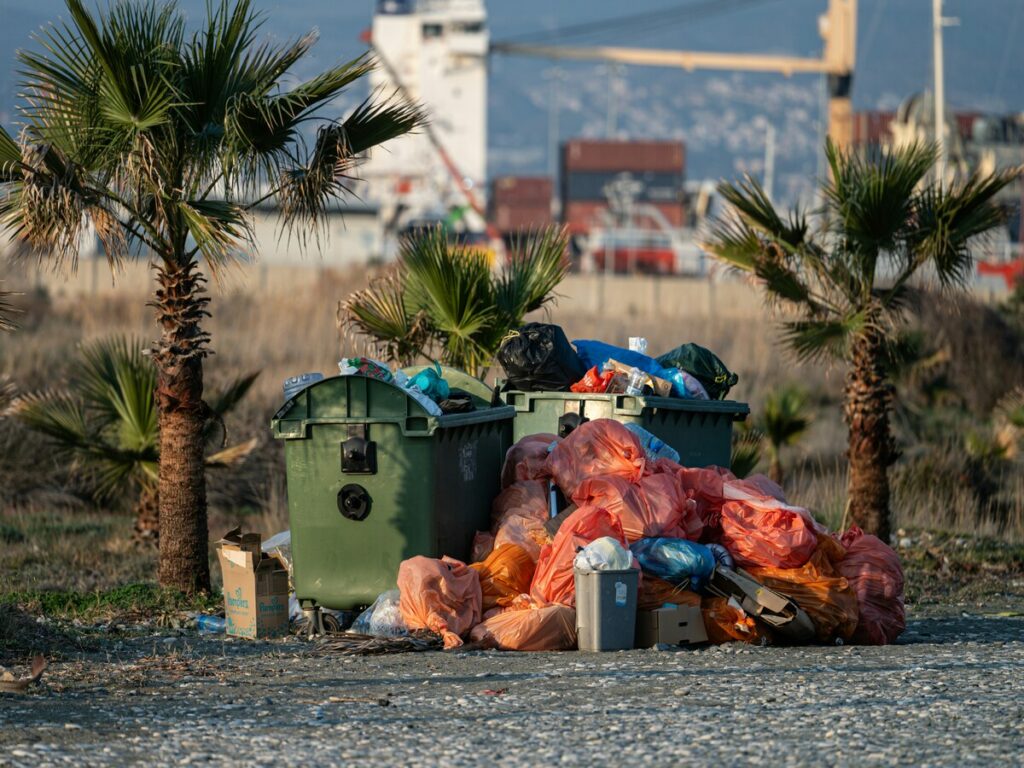
सी के लाभ&डी अपशिष्ट पुनर्चक्रण
पुनर्चक्रण निर्माण और विध्वंस (सी&डी) अपशिष्ट महत्वपूर्ण पर्यावरणीय लाभ प्रदान करता है. लैंडफिल में भेजे जाने वाले कचरे की मात्रा को कम करके, आप मूल्यवान लैंडफिल स्थान को संरक्षित करने और प्रदूषण को कम करने में मदद करते हैं. पुनर्चक्रण उपयोगी सामग्रियों को वापस लाकर प्राकृतिक संसाधनों का संरक्षण भी करता है, जैसे कंक्रीट और धातु, उद्योग में वापस. इससे अछूते संसाधनों को निकालने की आवश्यकता कम हो जाती है, जो खनन और नई सामग्रियों के निर्माण के पर्यावरणीय प्रभाव को संतुलित करता है.
प्रभावी अपशिष्ट प्रबंधन प्रथाएं कम करने पर जोर देती हैं, reusing, और पुनर्चक्रण सामग्री. जहां संभव हो कचरे को खत्म करना और सामग्रियों का पुन: उपयोग करना टिकाऊ निर्माण प्रथाओं का समर्थन करता है. उदाहरण के लिए, कुचला हुआ कंक्रीट नई निर्माण परियोजनाओं के लिए समुच्चय के रूप में काम कर सकता है, जबकि स्क्रैप धातु को अन्य उपयोगों के लिए पुन: उपयोग किया जा सकता है. ये प्रयास न केवल पर्यावरणीय नुकसान को कम करते हैं बल्कि एक चक्रीय अर्थव्यवस्था को भी बढ़ावा देते हैं.
ट्रैफ़िक शंकु स्वयं इन लाभों में योगदान करते हैं. पीवीसी से बने सेवानिवृत्त शंकु यांत्रिक पुनर्चक्रण से गुजर सकते हैं, जो नए पीवीसी के उत्पादन के लिए आवश्यक ऊर्जा का लगभग आधा उपयोग करता है. यह प्रक्रिया अपशिष्ट को कम करती है और ऊर्जा की खपत को कम करती है, इसे एक पर्यावरण-अनुकूल समाधान बनाना. पुनर्चक्रित सामग्रियों को नए शंकुओं में शामिल करके, आप निर्माण स्थलों पर स्थिरता प्रयासों का और समर्थन करते हैं.
बख्शीश: अपनी साइट पर रीसाइक्लिंग क्षेत्र व्यवस्थित करें और इन क्षेत्रों में श्रमिकों का मार्गदर्शन करने के लिए ट्रैफ़िक शंकु का उपयोग करें. यह पुनर्चक्रण योग्य सामग्रियों की उचित छँटाई और रख-रखाव सुनिश्चित करता है.
सफल सी&डी अपशिष्ट न्यूनीकरण मामले का अध्ययन
कई परियोजनाएँ प्रभावी सी की सफलता को प्रदर्शित करती हैं&डी अपशिष्ट न्यूनीकरण रणनीतियाँ. डलास में, टेक्सास, a project aiming for LEED Gold certification focused on deconstruction and construction within an existing structure. इस दृष्टिकोण ने सामग्री के पुन: उपयोग और पुनर्चक्रण को प्राथमिकता दी, अपशिष्ट को उल्लेखनीय रूप से कम करना. उसी प्रकार, सैन होज़े, कैलिफोर्निया, एक हासिल किया 62% इसके कचरे को पुनर्चक्रणकर्ताओं के पास भेजने की दर 2002. यह सफलता एक अनिवार्य कानून से उपजी है 50% अपशिष्ट पुनर्चक्रण द्वारा 2000 और एक निर्माण जमा कार्यक्रम जिसने पुनर्चक्रण प्रयासों को प्रोत्साहित किया.
ये केस अध्ययन अपशिष्ट प्रबंधन के लिए मूल्यवान सबक पर प्रकाश डालते हैं. स्थानीय समुदायों को शामिल करने से अपशिष्ट को कम करने के लिए साझा जिम्मेदारी को बढ़ावा मिलता है. शिक्षा अभियान और प्रशिक्षण सत्र पुनर्चक्रण प्रथाओं के बारे में जागरूकता बढ़ाते हैं. स्पष्ट रिपोर्टिंग सिस्टम और प्रदर्शन मेट्रिक्स स्थापित करने से प्रगति को ट्रैक करने और सुधार के क्षेत्रों की पहचान करने में मदद मिलती है. अपशिष्ट पृथक्करण और पुनर्चक्रण प्रथाओं को लागू करके, आप इन सफलताओं को अपनी परियोजनाओं पर दोहरा सकते हैं.
टिप्पणी: अपशिष्ट कटौती प्रयासों को बढ़ाने के अवसरों की पहचान करने के लिए निरंतर निगरानी और रिपोर्टिंग आवश्यक है. अपशिष्ट पृथक्करण क्षेत्रों के लिए स्पष्ट सीमाएँ बनाने के लिए यातायात शंकुओं का उपयोग करें, कुशल पुनर्चक्रण प्रक्रियाओं को सुनिश्चित करना.
ट्रैफिक कोन किसी भी निर्माण स्थल पर सुरक्षा और अपशिष्ट प्रबंधन को बेहतर बनाने में महत्वपूर्ण भूमिका निभाते हैं. वे आपको स्पष्ट सीमाएं बनाने में मदद करते हैं, यातायात का मार्गदर्शन करें, और जोखिम कम करें. उचित चयन, प्लेसमेंट, and maintenance of रंगीन सुरक्षा शंकु ensure they remain effective throughout your project. नियमित निरीक्षण और समायोजन उन्हें दृश्यमान और कार्यात्मक बनाए रखते हैं.
Incorporating रंगीन सुरक्षा शंकु into your safety training enhances awareness among workers. यह सरल उपकरण सुरक्षित का समर्थन करता है, अधिक कुशल कार्य वातावरण. अपनी टीम की सुरक्षा और संचालन को सुव्यवस्थित करने के लिए रणनीतिक रूप से ट्रैफ़िक शंकु का उपयोग करना शुरू करें. आप आज ही अपने निर्माण स्थल को सुरक्षित और अधिक व्यवस्थित बना सकते हैं.
